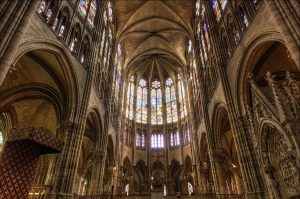 Throughout history, architecture has been the most prominent outward expression which defines an era. Whether it was the pyramids of Egypt or the ritualistic sites such as Stonehenge or Chichen Itza, they tell the story of the times.
Throughout history, architecture has been the most prominent outward expression which defines an era. Whether it was the pyramids of Egypt or the ritualistic sites such as Stonehenge or Chichen Itza, they tell the story of the times.
These towering edifices of magnificent proportion naturally did not have the advantage of modern tools and equipment. Using ingenious structural components instead of overhead cranes, workers labored daily lifting heavy stone and putting each into place with brute strength and simple tools. It was not uncommon for an individual to labor his entire life as a construction worker and not see the finished project. A little different than today, when you can get an emergency tree removal Fayetteville NC done in under a few days or build a new house in just a few months.
Gothic architecture reigned supreme from the 12th century well into the 16th century. Shifting from the Roman and Greek styles of simple lines which dominated for ages, Gothic brought the world intricate stone workmanship that showed off the talents of artisans from all over the continent.
Influenced by the French and Romanesque style of architecture, the Gothic expression soon – in relative terms, dominated much of France and Britain. Instead of the dark reputation that Gothic has today, when first introduced it was in a time of relative peace and prosperity. The massive windows and entrances were designed to bring light into the lives of the people.
Borrowing from the Roman, the Greek and the Islamic cultures a blending of each along with the innovation of the time, sets Gothic architecture apart as unique unto its own. One of the striking features of the Gothic style is the use of high pointed arches. With the purpose of adding structural integrity the arches relieved some of the stress on the tall thinner columns supporting the thrust. Thinner is a relative term, but compared to Roman and Greek pillars the enormous posts are considerably less in girth.
The design of incorporating slenderer support columns extended all the way to the ceiling. The continuation of the slimmer columns extends and is repeated in the upper levels of the nave. It is taken even further and becomes a part of the roof, therefore an integral part of the vault. This leverage allowed for bigger windows and more light to enter.
Ornate stonework was introduced roughly in the fourteenth century. It is found surrounding windows, doors and alcoves. The term for this type of work is called, tracery, and over time became a status symbol of the architects, owners and artisans associated with the development of each structure. A signature was clearly seen through the work and as time went on it became more exuberant in its expression. In the late Gothic era the trend was that nearly every wall was decorated with beautiful designs and tracery.
To some the over exuberance of design seemed chaotic. It has an orderliness and coherency to it, but there is – in the opinion of some- a little too much going on. Apparently, near the end of the 16th century the artists at the time were ready for a cleaner display and the medieval style gave way to the Classic Renaissance.
I highly suggest a tour of a few of the cathedrals and churches born of the era of creative outlet. Leave a comment below with the name of your favorite Gothic architectural wonder. There are so many to choose from, but each has its own very unique feel.